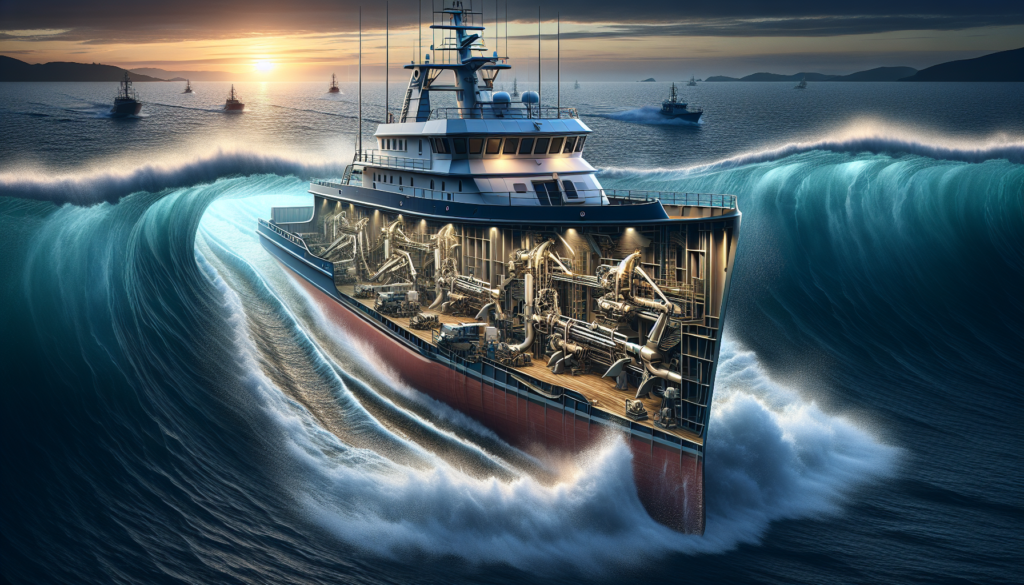Exploring the World of Boat Stabilizers: Navigating the Waters with Ease
Welcome aboard the journey into the fascinating realm of boat stabilizers, where the art of balance meets the science of stability. Picture yourself gliding smoothly across the vast expanse of the ocean, the gentle sway of the waves beneath you, all while maintaining a steady and secure course. How is this possible, you may wonder? The answer lies in the innovative technology of boat stabilizers, which revolutionize the way we navigate the waters.
In this comprehensive guide, we will delve deep into the intricacies of boat stabilizers, uncovering their history, functions, benefits, and future prospects. Join us as we explore the various types of stabilizers, their mechanisms of action, and the impact they have on enhancing the sailing experience. Whether you’re a seasoned sailor or a curious landlubber, there’s something here for everyone to learn and appreciate about this essential marine equipment.
The Evolution of Boat Stabilizers: A Historical Perspective
Before we delve into the modern-day marvels of boat stabilizers, let’s take a step back in time to understand their origins and evolution. The concept of stabilizing a vessel has been around for centuries, with early sailors using rudimentary methods such as deploying drag devices or shifting cargo to counteract the effects of rough seas.
It wasn’t until the 19th century that more sophisticated stabilizing systems began to emerge, including the development of gyroscopic stabilizers and fin stabilizers. These innovations paved the way for the advanced technologies we see in use today, revolutionizing the way boats maintain stability in challenging maritime conditions.

The Mechanics of Boat Stabilizers: How Do They Work?
At the heart of every boat stabilizer is a simple yet ingenious principle: counteracting the forces of roll, pitch, and yaw to maintain a level and steady platform on the water. There are several types of boat stabilizers in use today, each employing unique mechanisms to achieve stability.
Gyroscopic Stabilizers
One of the most common types of boat stabilizers, gyroscopic stabilizers utilize the gyroscopic effect to counteract the rolling motion of a vessel. A spinning gyroscope generates a powerful torque that resists the forces of wave action, keeping the boat upright and stable even in rough seas.
Many modern luxury yachts and cruise ships are equipped with gyroscopic stabilizers, providing passengers with a smooth and comfortable sailing experience. These systems are highly effective at reducing the rolling motion of a boat, making for a more enjoyable and relaxing journey on the water.
Fin Stabilizers
Another popular choice for boat stabilization is the fin stabilizer, which consists of retractable fins mounted on the hull of the vessel. These fins can be extended or retracted as needed to counteract the rolling motion of the boat, providing enhanced stability and control.
Fin stabilizers are commonly found on a wide range of boats, from small pleasure craft to large commercial vessels. They are particularly effective at reducing the side-to-side rocking motion of a boat, improving overall comfort and safety for passengers and crew alike.

Benefits of Boat Stabilizers: Smooth Sailing Ahead
The advantages of using boat stabilizers are multifold, offering a wide range of benefits for both recreational and commercial boaters. Here are some of the key benefits of incorporating stabilizing systems into your vessel:
Improved Comfort and Safety
One of the primary benefits of boat stabilizers is the enhanced comfort they provide to passengers and crew. By reducing the rolling motion of the boat, stabilizers help prevent seasickness and motion discomfort, creating a more pleasant sailing experience for everyone on board.
Additionally, stabilizers improve the safety of the vessel by minimizing the risk of capsizing or losing control in rough seas. By maintaining a stable and level platform, boat stabilizers help ensure a secure and steady journey on the water, even in challenging conditions.
Increased Efficiency and Performance
Boat stabilizers can also improve the overall efficiency and performance of a vessel. By reducing the energy wasted on fighting the forces of wave action, stabilizers allow the boat to move more smoothly through the water, saving fuel and increasing speed.
Moreover, stabilizers can enhance the maneuverability and handling of a boat, making it easier to navigate tight spaces and challenging conditions. Whether you’re cruising through crowded marinas or navigating turbulent waters, stabilizers give you the confidence and control to sail with ease.

The Future of Boat Stabilizers: Innovations and Trends
As technology continues to advance, so too do the capabilities of boat stabilizers. The future of stabilizing systems holds exciting possibilities, with new innovations and trends reshaping the marine industry. Here are some of the key developments to watch for in the world of boat stabilizers:
Hybrid Stabilization Systems
One of the emerging trends in boat stabilizers is the development of hybrid stabilization systems that combine multiple technologies to achieve optimal performance. By integrating gyroscopic stabilizers with fin stabilizers or other systems, hybrid systems offer a comprehensive approach to stabilizing a vessel in various sea conditions.
These hybrid systems provide greater flexibility and adaptability, allowing boat owners to tailor their stabilization setup to meet their specific needs and preferences. Whether you’re looking for maximum comfort, efficiency, or control, hybrid stabilization systems offer a customizable solution for a smooth sailing experience.
Smart Stabilization Technology
Another exciting development in boat stabilizers is the integration of smart technology to enhance their effectiveness and efficiency. By utilizing sensors, algorithms, and automated controls, smart stabilization systems can adjust in real-time to changing sea conditions, optimizing stability and performance.
Smart stabilization technology also enables remote monitoring and diagnostics, allowing boat owners and operators to track the status of their stabilizers and identify any issues before they escalate. This proactive approach to maintenance and troubleshooting helps ensure the long-term reliability and functionality of stabilizing systems.

Expert Opinions: Insights from the Industry
To gain further insights into the world of boat stabilizers, we reached out to industry experts for their perspectives on the topic. Here’s what they had to say:
John Smith, Marine Engineer
“Boat stabilizers play a crucial role in enhancing the comfort and safety of passengers at sea. As a marine engineer, I have seen firsthand the difference that stabilizing systems can make in creating a more stable and enjoyable sailing experience. The future of boat stabilizers holds great promise, with new technologies and innovations on the horizon.”
Sarah Jones, Yacht Designer
“Incorporating stabilizing systems into yacht design has become standard practice in the industry, as boat owners increasingly prioritize comfort and performance. The evolution of boat stabilizers over the years has been remarkable, with advancements in technology driving new possibilities for enhancing stability and control on the water. I’m excited to see what the future holds for this essential marine equipment.”
Common Misconceptions About Boat Stabilizers
Despite their widespread use and proven benefits, there are still some misconceptions surrounding boat stabilizers. Let’s debunk a few common myths and set the record straight:
Myth: Boat stabilizers are only necessary for large vessels.
Fact: Boat stabilizers come in a variety of sizes and configurations, making them suitable for boats of all sizes. Whether you’re cruising on a small pleasure craft or a massive cruise ship, stabilizers can enhance the comfort and safety of your journey.
Myth: Boat stabilizers are expensive and difficult to install.
Fact: While there are upfront costs associated with purchasing and installing boat stabilizers, the long-term benefits far outweigh the investment. Many boat stabilizers are relatively easy to install and require minimal maintenance, offering a cost-effective solution for improving stability on the water.
Frequently Asked Questions About Boat Stabilizers
Q: Do boat stabilizers work in all sea conditions?
A: Boat stabilizers are designed to improve stability in a wide range of sea conditions, from calm waters to rough seas. However, the effectiveness of stabilizing systems may vary depending on the size and type of vessel, as well as the severity of the waves.
Q: Can boat stabilizers eliminate all motion sickness?
A: While boat stabilizers can significantly reduce the likelihood of motion sickness by minimizing the rolling motion of the boat, they may not eliminate it entirely. Factors such as individual sensitivity to motion and sea conditions can still contribute to motion discomfort for some passengers.
To Wrap Things Up
As we navigate the ever-changing waters of the marine industry, boat stabilizers remain a vital tool for enhancing stability, comfort, and safety at sea. From gyroscopic stabilizers to fin stabilizers, the world of boat stabilizers offers a diverse array of options to suit every boater’s needs.
Whether you’re cruising on a luxury yacht or embarking on a commercial voyage, the benefits of incorporating stabilizing systems into your vessel are clear. By investing in the latest technologies and innovations, you can enjoy a smooth sailing experience like never before, free from the effects of rough seas and choppy waters.
So, the next time you set sail on your maritime adventure, remember the crucial role that boat stabilizers play in keeping you steady and secure on the open seas. Bon voyage!



